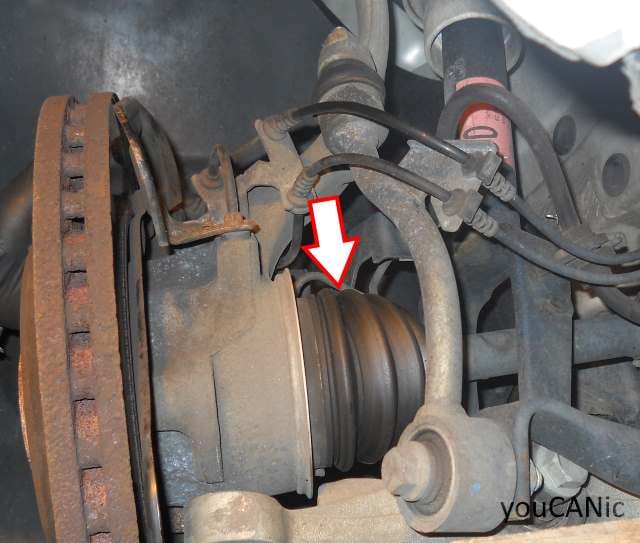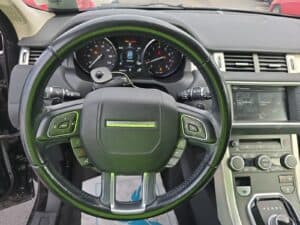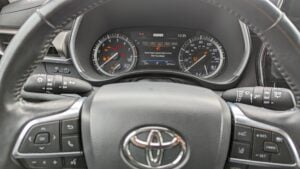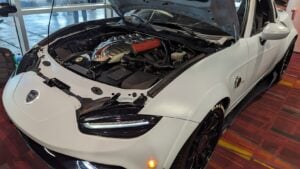Signs of Bad CV Joint, Sound, Symptoms, Cause
One of the most common problems with CV joints is when the protective boot gets broken or cracks, which leads to CV joint failure. As grease leaks, dirt, and moisture will enter the CV joint. This will cause the CV joint to wear faster and fail due to a lack of lubrication and corrosion.
One of the most common symptoms of a bad CV joint is the click, click, click sound when turning. The same sound will be noticed under heavy acceleration as well.
Bad CV Joint Sound
Outer CV joint boots usually get damaged first as they need to withstand more movement than the inner boots. They are closer to the wheel, which has to move up and down every time you go over bumps or potholes. You should regularly check the condition of the CV joint boot.

If you notice a crack on the CV joint boot, it must be replaced or fixed immediately. The mechanic will look for tears, cracks, or other damage and recommend the best action.
CV joints, also known as constant-velocity joints, are found in front-wheel drive, rear-wheel drive, and all-wheel-drive vehicles. When they fail, you will hear a clicking noise when you turn, especially if you are accelerating.
Symptoms
The most common symptom of a bad CV joint is clicking noise when turning or accelerating.
- Click, click, click noise when turning.
- Cracks or breaks in the rubber or plastic boot surround the CV joint.
- Grease leaking from cracks onto the wheel rim or inside the wheel well.
- Hearing a clicking sound from the wheels when going around turns at slow speeds (indicative of damage to the outer CV joints)
- Hearing noises when the car is driving straight (possible damage to the inner CV joints)
- The vehicle shudders or shakes during acceleration.
Preventing CV Joint Failure
Inspect near the CV joint for grease leaks, especially on the exterior CV boot. Also, check if the CV joint clamps are loose or broken.
Also, visually inspect your CV joints frequently for wear, tearing, cracks, or other damage to the boot. Catching potential problems early on can result in a less expensive repair process and prevent more extensive damage to the vehicle’s driveshaft, wheels, or whole CV joint.
Replacing a CV Joint
Early detection of damage to a CV boot is beneficial because, in this case, the boot is replaced, and the joint is repacked with new grease. Replacements are typically sold as a kit specific to the vehicle, and it will include a new CV boot, grease, and new clamps. It is less expensive than replacing the driveshaft or the entire CV joint.
If the damage is worse beyond a cracked boot and the entire CV joint is too worn, it must be replaced. CV joints cannot be repaired; they have to be replaced with a new part. Furthermore, sometimes you will not replace just the CV joint because it will not be sold separately. You may have to replace the entire CV axle.
Instructions for replacing the CV boots, joints, or driveshaft will vary depending on your vehicle. Replacing the CV joint is a complicated procedure that will be even more expensive if you purchase special tools to complete the job. That cost (and the time spent) can be weighed against the cost of completing the job at a repair shop.
Replacement Cost

The cost of replacing a CV boot alone can vary from $350-$800. If you will remove the CV joint to replace the boot, you may consider replacing the CV joint/axle.
A new CV joint isn’t expensive, but the time required to replace a CV joint can be labor-intensive. If you only replace the boot, there is a chance that the CV joint will fail months later or within a few years.
Can a CV joint be repaired?
A worn-out CV joint cannot be fixed. It needs to be replaced with a reconditioned or new part. CV joints don’t always come separately. If that is the case, you may need to replace the whole driveshaft. The repair shop may charge $380 to $800 for the replacement.
If the CV joint boot is leaking, it can be replaced.
Can I change a CV joint on my own?
You can change the driveshaft or CV joint boot, but you need the right size socket and a breaker bar or torque wrench to loosen the hub nut or CV joint lock-nut.
The lower ball joint will also need to come out, and it’s hard to do without the right tools. Once you’ve replaced the CV joint boot, you must re-torque the hub nut to the specified torque.
We hope you find the Signs of Bad CV Joint, Sound, Symptoms, and Cause guide helpful. Check these troubleshooting and repair guides for more help on your vehicle.








